There was a perfect harmony between the beautiful spring weather with a magnolia tree literally blooming under our eyes during lunch time, Markus Lüpertz‘ amazing invasion of the city of Orléans with eleven sculptures throughout the town center and 56 paintings and drawings in the Musée des Beaux Arts, and curator Olivia Voisin‘s charming and brilliant tour of the exhibition, “Markus Lüpertz, Le Faiseur de Dieux” (the maker of gods). With its 117 000 inhabitants and its cult to Joan of Arc, who freed Orléans from the English in 1429 during the 100 Year War, the charming town is located on the river Loire and is now populated with many former Parisians. They have no idea that their Museum has one of the richest collection in France with 16 th-18 th century paintings and the German 80 year old artist was happy to help them remember. His elegance, with a little ring in his right ear, a sculpted stick which he needs to walk since a car accident hurt his knee, and varnished shoes, was mesmerizing. But Der Krieger, the warrior, speaks very frankly.
It is a real coup that Olivia Voisin has managed in attracting one of the most prolific German artist of the time, a contemporary and great friend of Baselitz and the late Immendorff, who seemed truly happy with the installation of his works in this city where history dialogues with urbanism. He is represented since 1968 by Michael Werner who is showing him in New York a the moment and lent many pieces for the show.
When he first came last August, Lüpertz said that she could have five sculptures. There are twice more (11) and these one ton pieces are all set in key areas of town. Three in the municipal Parc Louis Pasteur, which children cross every day on their way to school, three around the cathédrale Sainte Croix, two at Hotel Cabu, the museum of archeology and history, one at Hotel Groslot and “Fragonard” and “Daphné” by the museum. All of this was made possible by the technical team of the museum who were able to transport the works from Germany and install them in town.
When he goes to the Louvre, Lüpertz goes for Fragonard whom he loves and for the Greeks, not for Leonardo. He started telling us about the difference between painters’ sculptures and sculptors’ sculptures, because he believes that painters are the best sculptors at the moment. Since 1981, he has led both techniques and research simultaneously: his monumental sculptures often seem like they have fallen from a painting and numerous drawings and pastels are shown here as studies for a sculpture. He described making his 18 m high Hercules in three six meter high pieces. Climbing at great risk on a small scaffolding.
He loves Maillol whose works he found again in Orléans and started working with bronze because of him. He is in a permanent quest and describes his creative pulsion like this: “A canvas is always born from the previous one. A feeling of insatisfaction, unfinished work, pushes you towards a new project. It’s like a perpetual chain, a self imposed process which leads you to the next attempt”. Every time he sells a piece the produce pays for a new one. He works from a castle in Trebbin, outside Berlin provided by his gallerist and lives also in western Germany.
When you enter the show in the basement of Musée des Beaux Arts, you are met by a series of “Dante+Beatrice (Siethen lake)” painted near Berlin during lockdown. Two large paintings with characters who look like statues and a few smaller preparatory ones which are almost abstract: they are named “Seduction”. In the main gallery, large and bright (untitled) paintings precede the Arcadia series. They hang on turquoise and dark blue walls as a reminder that we are in an Art museum not in a contemporary art gallery as Olivia Voisin pointed out.
The surprise was to find in one of the little rooms of the museum dedicated to drawings and prints, some pastels of Hercules and Daphnis. The strength of the sculptures is obvious in these small works. Lüpertz is a very complete artist. He not only creates monumental sculptures and hundreds of paintings but also decors for the opera (lately in 2021 for Puccini’s La Bohême at the Meininger Staatsoper); he is also a jazz pianist and will perform with his group the Triple Trip Touch in Orléans on June 18, after giving a tutorial to the students of ESAD, the art school adjacent to the cathedral and museum.
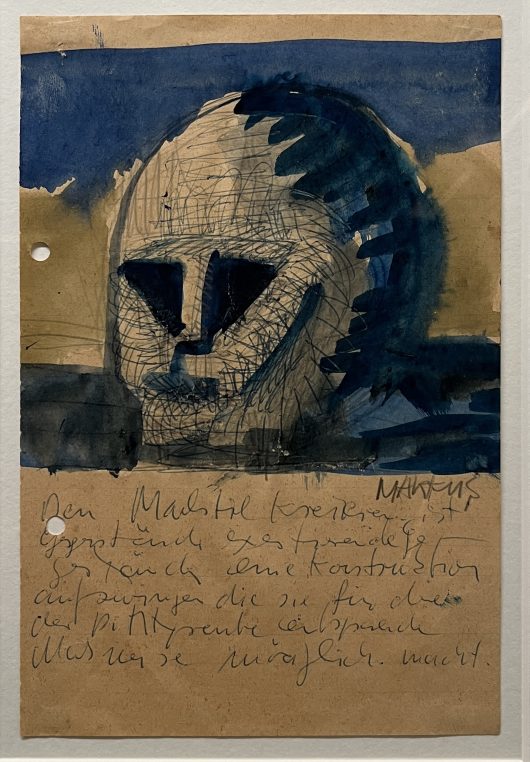
Untitled, (study for Head-monument, dithyrambic) 1964, eight drawings, Kunsmuseum Den Haag, long term loan from a private collection
He has run for twenty years the Kunstakademie in Düsseldorf after teaching there and in Karlsruhe, and is very careful to explain his thoughts: “Art transforms the human being, makes him better”. Yet the spectator must understand the works by himself. He his vehement against Pop Art where the image is more important than the art. He will end the two hour visit with a great ode to Dithyramb. “The grace of the Twentieth century is rendered visible by the dithyramb I have invented. Painting from 1963-1976” is the title of his exhibition at Michael Werner New York at the moment. This ancient rhythmic choral song in honor of the Greek god Dyonisus was described by Nietzsche whom he loves. And we see eight drawings referring to it in one of the small galleries. I also loved his 1973 studies for the Apocalypse in pastel on paper, lent by the Birkelsche Stiftung fur Künst und Culture.

Guido Reni, David holding Goliath ‘s head, deposited by the Louvre sone of the treasures of the museum
The exhibition is at Musée des Beaux Arts in Orléans until September 4. Allow enough time to visit the collections which are precious. The train to Orléans leaves from Gare d’Austerlitz and takes 70 mns. Driving is 2 hours. The town is small enough that you can walk everywhere.
Share this Post
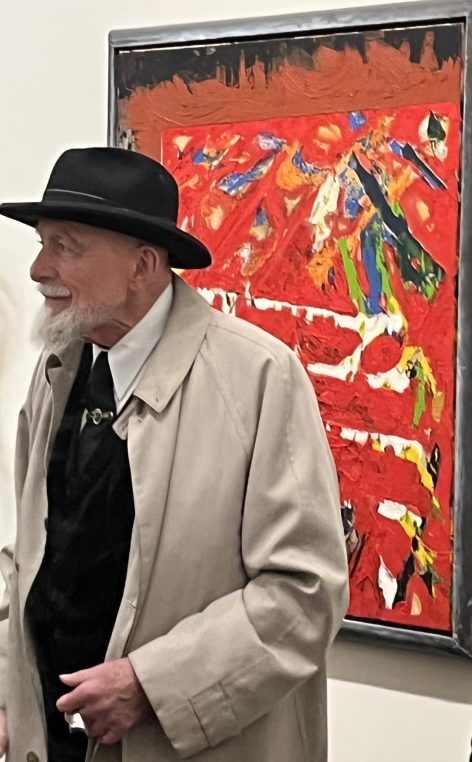
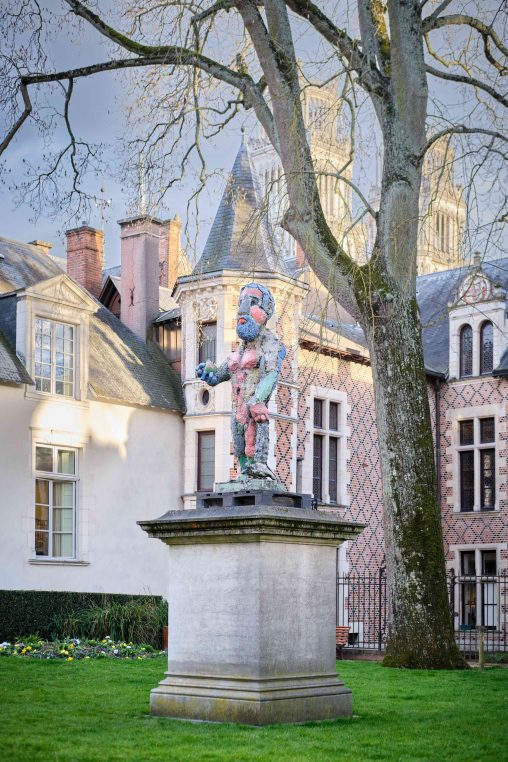
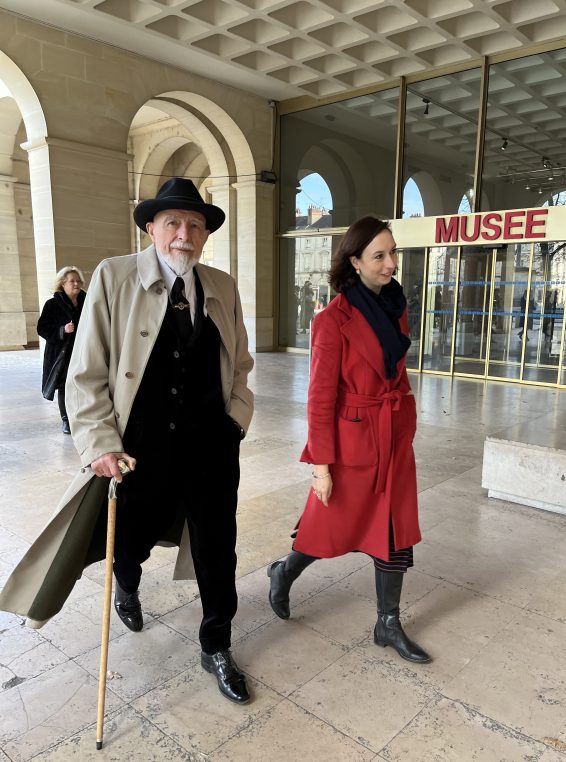

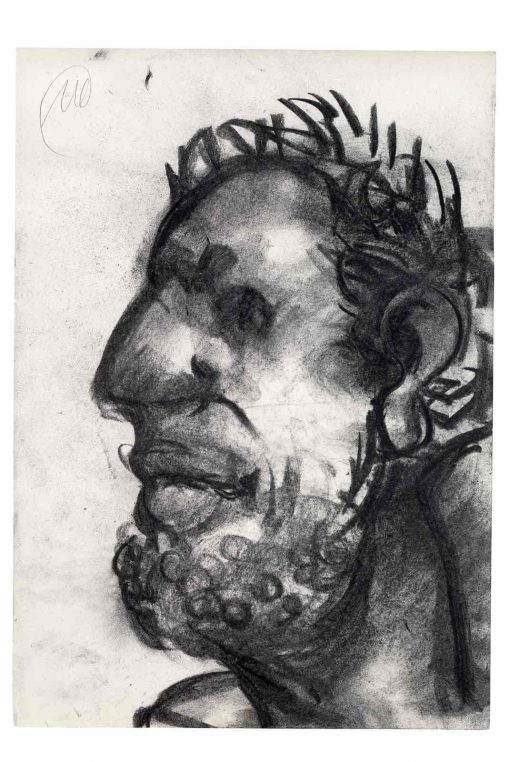
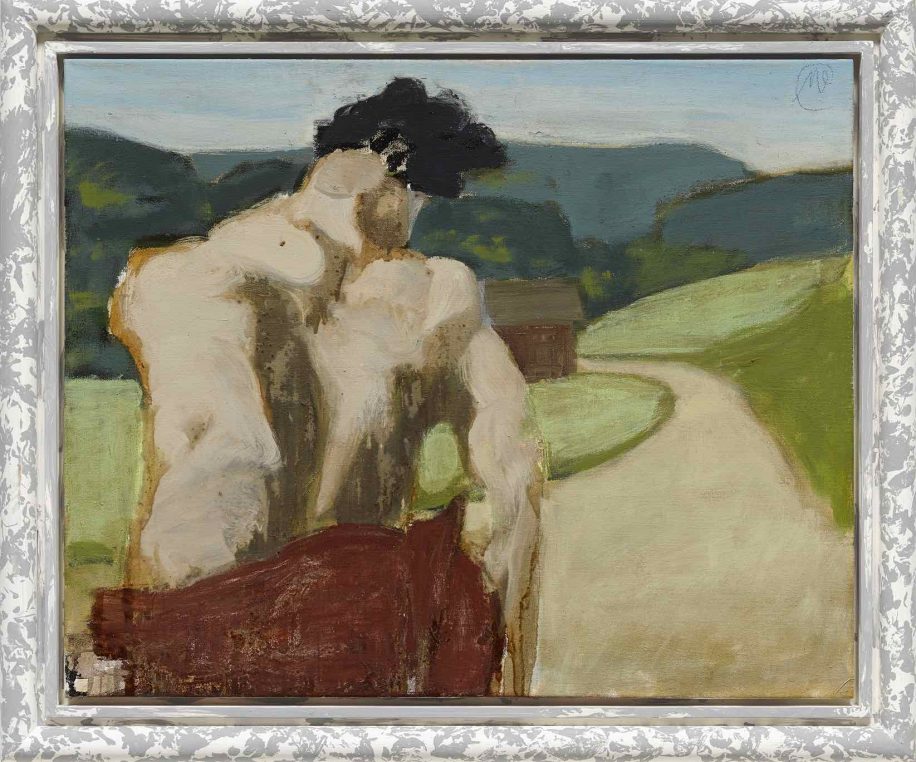
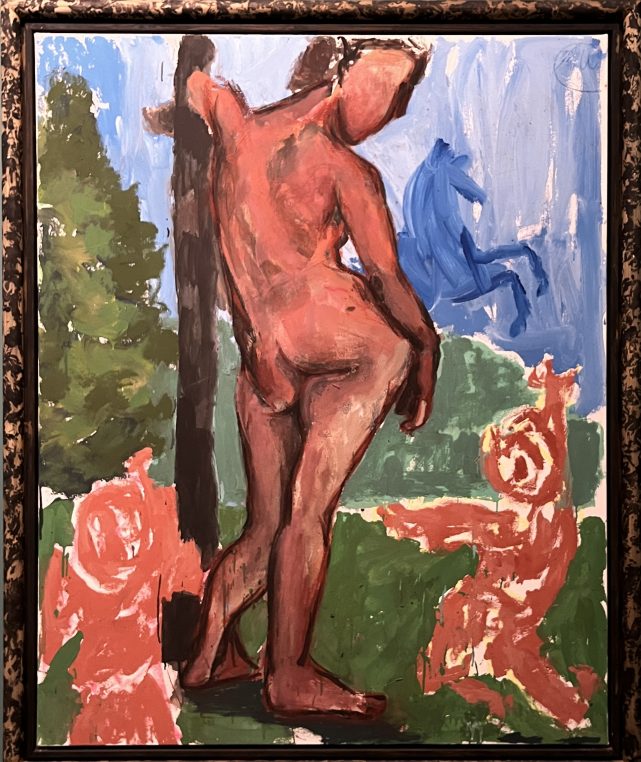
One Comment on “Markus Lüpertz in Orléans, what a charmer!”
Markus Luperz m’intéresse depuis de nombreuses années. Pour moi il est au moins l’égal de Baselitz.
Je vais voir son exposition avec enthousiasme.